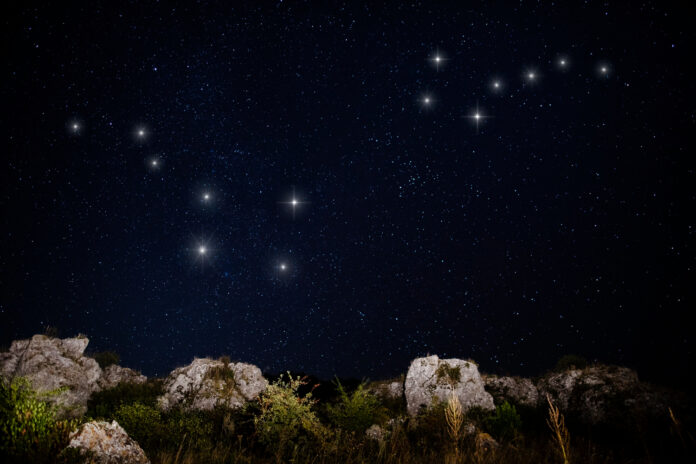Ever catch yourself gazing up at the night sky, feeling a teeny-tiny bit insignificant as those stars twinkle away like distant disco balls? Yeah, me too. But here’s the thing: those tiny pinpricks of light hold the secrets to the entire universe. So, what is a star? Well, they’re not just pretty decorations, but cosmic powerhouses, element factories, and even the birthplaces of planets like our own.
Buckle up, because we’re about to go into the world of stars! We’ll uncover the secrets of these glowing bodies, from their fiery cores to their dazzling surfaces. Get ready to explore a stellar zoo, home to familiar faces like our Sun and fascinating celestial bodies like red giants and neutron stars. Our journey will even take us to stellar nurseries, where baby stars are born, before culminating in the grand finale of supernovas – the universe’s most explosive fireworks show. By the end of this post, you’ll see those twinkling lights in a whole new way. Trust me, it’s gonna be stellar!
What is a star really?
At its core, a star is a massive celestial body primarily composed of hydrogen and helium. The intense pressure and heat at the star’s center trigger nuclear fusion, where hydrogen atoms fuse to form helium, releasing enormous amounts of energy in the process. This energy radiates outward as light and heat, making the star shine.
In simple terms, a star is a gigantic ball of hot gas, mostly hydrogen and helium, held together by its own gravity. It’s like a cosmic pressure cooker, where the intense heat and pressure in the center trigger a mind-boggling process called nuclear fusion. Think of it like this: hydrogen atoms, the shyest kids at the stellar party, get squeezed so tightly together that they fuse, forming helium. This fusion releases an huge amounts of energy – the same kind that powers the sun and lights up our days. It’s this energy, radiating outwards as light and heat, that makes stars shine and twinkle across the vast expanse of space.
But wait, there’s more! Stars aren’t just pretty lights; they’re the universe’s ultimate recycling centers. As they age and evolve, they create heavier elements like carbon, oxygen, and even iron – the very building blocks of life. In fact, every atom in your body, except hydrogen, was once forged inside the fiery heart of a star. So, in a way, we’re all made of stardust. Pretty cool, right?
The Anatomy of a Star
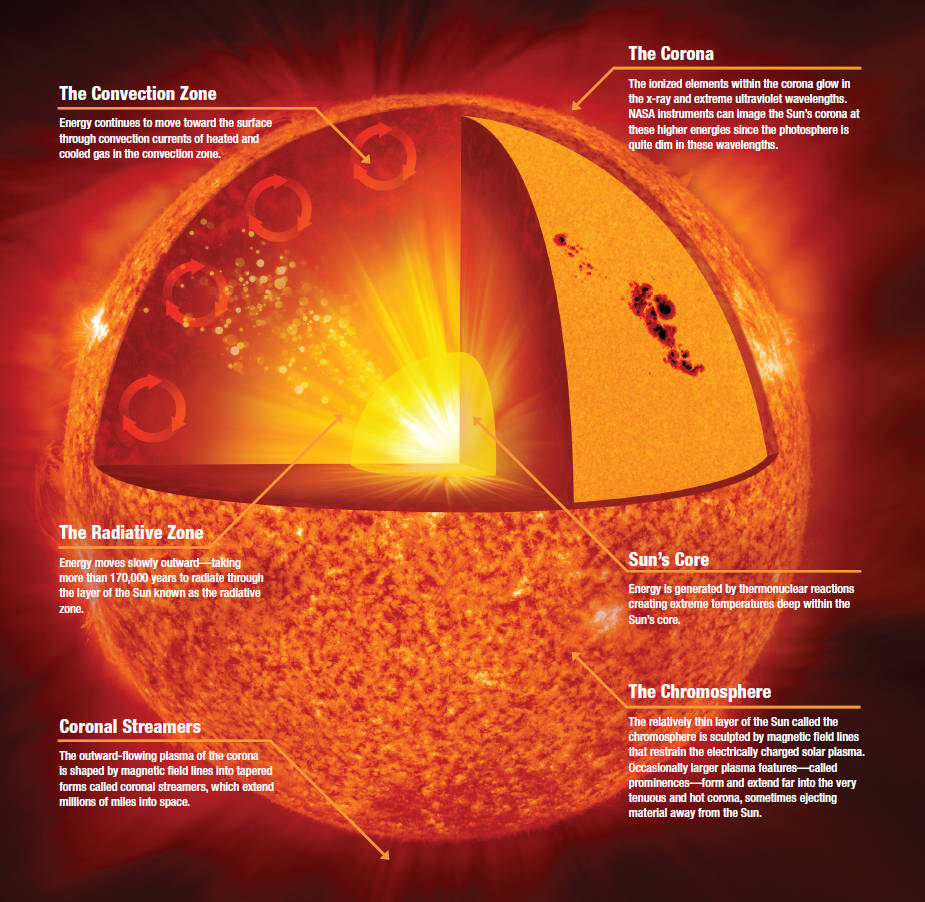
Stars, like onions, have layers. Each layer has a unique role in the star’s life and function, contributing to its brilliance and longevity. Let’s peel back these layers to understand their individual roles.
At the Heart of it All: The Core
The core is the star’s powerhouse, a scorching furnace where temperatures and pressures reach unimaginable levels. Here, in this intense environment, nuclear fusion takes center stage. Hydrogen atoms, the simplest and most abundant element in the universe, are fused together to form helium. This fusion process unleashes an enormous amount of energy, providing the star with its luminosity and preventing it from collapsing under its own immense gravity.
The Radiative Zone: A Photonic Dance Floor
Surrounding the core is the radiative zone, where the energy produced by fusion begins its outward journey. This region is densely packed with charged particles, creating a challenging obstacle course for the energy-carrying photons. They bounce and scatter their way through the radiative zone, gradually transferring their energy to the surrounding plasma. This slow and meandering path can take photons thousands of years to traverse.
The Convective Zone: Where Things Get Heated
As we move further outward, we encounter the convective zone. Here, heat transfer takes on a more dynamic form. Vast plumes of hot plasma rise from the radiative zone, carrying energy towards the surface. These rising plumes cool and then sink back down, creating a continuous cycle of convection that efficiently transports energy to the outer layers of the star.
The Photosphere: A Star’s Shining Surface
The photosphere is the star’s visible surface, the layer we observe when we gaze up at the night sky. This relatively thin layer is where most of the star’s light is emitted. It’s a tumultuous region, marked by sunspots (cooler regions) and granules (bubbles of hot gas) that give it a grainy appearance. The photosphere is our window into the star’s interior, providing clues about its temperature, composition, and activity.
The Atmosphere: Reaching for the Stars
Beyond the photosphere lies the star’s atmosphere, a tenuous layer of gas that extends into space. The chromosphere, a layer of hot, glowing gas, can be observed during a solar eclipse as a reddish ring around the moon’s silhouette. The outermost layer, the corona, extends for millions of kilometers and is incredibly hot, reaching temperatures far exceeding those of the photosphere. This ethereal layer is best observed during a total solar eclipse as a halo of pearly white light.
Types of Stars
Stars are not all created equal. Just like there are different breeds of dogs or varieties of flowers, the cosmos boasts an astonishing array of star types, each with its own unique characteristics, colors, sizes, and behaviors.
Main Sequence Stars
These are the “ordinary” stars, the backbone of the stellar population, including our very own Sun. They’re in the prime of their lives, steadily fusing hydrogen into helium in their cores, and occupying the “main sequence” on the Hertzsprung-Russell diagram (a handy chart astronomers use to classify stars). Main sequence stars come in various sizes and temperatures, from cool, dim red dwarfs like Proxima Centauri (the closest star to our solar system) to hot, bright blue giants like Rigel, the brilliant blue star in Orion’s foot.
Giants and Supergiants
As stars age, they begin to run out of hydrogen fuel in their cores, leading to dramatic changes. They swell into enormous red giants, engulfing their inner planets and radiating their outer layers into space. Betelgeuse, the bright red star in Orion’s shoulder, is a prime example of a red giant nearing the end of its life. Some stars evolve into even more gargantuan blue supergiants, shining with incredible luminosity. Rigel, mentioned earlier, is also a blue supergiant, a star destined for a spectacular supernova explosion.
White Dwarfs
Once a star like our Sun exhausts its fuel, it sheds its outer layers and leaves behind a small, incredibly dense core called a white dwarf. Sirius B, the companion star to Sirius (the brightest star in the night sky), is a white dwarf, about the size of Earth but packing the mass of the Sun. These stellar remnants no longer produce energy through fusion but continue to glow faintly as they slowly cool down over billions of years.
Neutron Stars
For stars much more massive than our Sun, their fate is far more dramatic. They end their lives in catastrophic explosions called supernovae, leaving behind ultra-dense remnants known as neutron stars. The pulsar at the heart of the Crab Nebula, a remnant of a supernova observed in 1054 AD, is a rapidly spinning neutron star that emits beams of radiation like a cosmic lighthouse. These mind-boggling objects are so dense that a teaspoon of neutron star material would weigh billions of tons!
While main sequence stars, giants, white dwarfs, and neutron stars represent the main branches of the stellar family tree, there are also some intriguing outliers. Brown dwarfs, like Luhman 16, are “failed stars,” too small to ignite sustained nuclear fusion but still radiating some heat. Variable stars, such as Mira, pulsate in brightness, like cosmic beacons winking at us across the vastness of space. And then there are the enigmatic black holes, regions of spacetime so warped by gravity that not even light can escape their clutches. The supermassive black hole at the center of our Milky Way galaxy, Sagittarius A*, is one such example.
Formation of a star: Nebulae – Where Stars Are Born
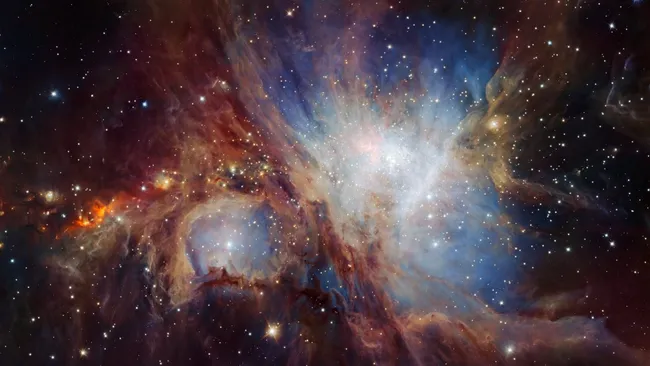
Stars emerge from vast molecular clouds of gas and dust scattered throughout the universe.These interstellar clouds, known as nebulae, are the birthplace of stars. Within their depths, gravity works its magic, pulling together clumps of gas and dust, setting the stage for a stellar spectacle.
The Orion Nebula, a dazzling cloud visible to the naked eye in the constellation Orion, is a prime example of a stellar nursery-which is a coellection of stars formed from the molecular cloud. It’s a hotbed of star formation, teeming with young, energetic stars that light up the surrounding gas and dust.
How it is formed: Collapse and Contraction
As gravity gathers more and more material within a nebula, the density and pressure at its center increase. This triggers a chain reaction – the cloud begins to collapse under its own weight, like a giant snowball rolling downhill, accumulating more and more mass as it goes.
During the collapse of the cloud, it fragments into smaller clumps called protostars (baby stars), each destined to become a star. These protostars continue to contract, their cores becoming denser and hotter with each passing moment.
The Birth of a Star: Ignition and Main Sequence
Eventually, the temperature and pressure at the core of a protostar reach a critical threshold. Hydrogen atoms begin to fuse, transforming into helium and releasing a flood of energy. This is the moment of ignition, the birth of a new star.
The newborn star settles into a state of equilibrium, where the outward pressure generated by nuclear fusion balances the inward pull of gravity. This stable phase, known as the main sequence, is where a star spends most of its life, shining brightly and converting hydrogen into helium.
Our own Sun is a main sequence star, about halfway through its estimated 10 billion-year lifespan.
ALSO READ: What is Space Farming and How Does It Work?
Factors Influencing Star Formation
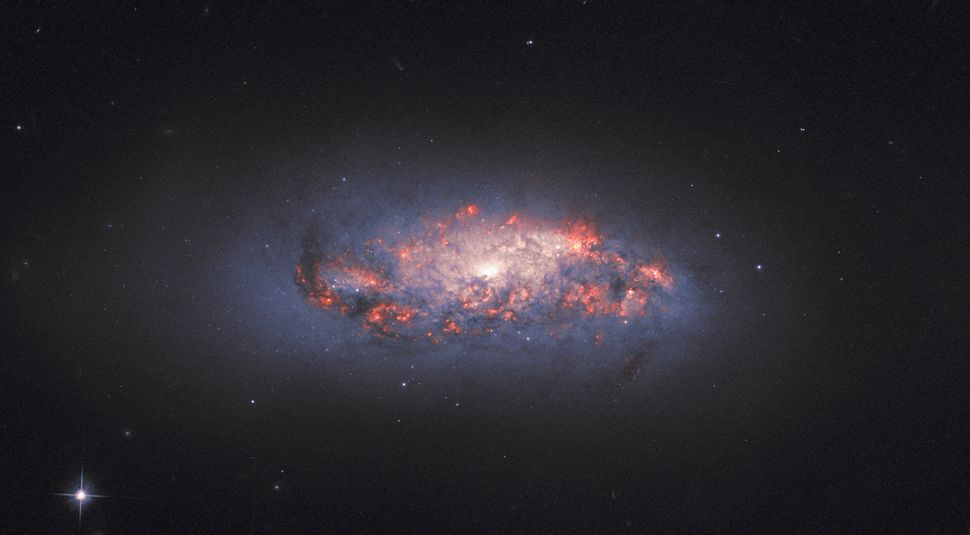
The process of star formation isn’t always straightforward. Several factors can influence the fate of a collapsing cloud and the characteristics of the stars that emerge.
- Mass: The amount of mass a protostar accumulates plays a crucial role in its destiny. More massive stars burn hotter and brighter but have shorter lifespans. Less massive stars are cooler and dimmer but can live for billions of years.
- Rotation: The initial rotation of a collapsing cloud can determine whether a single star or a multiple star system forms. Rapidly rotating clouds may split into two or more protostars, resulting in binary or multiple star systems.
- Magnetic Fields: Magnetic fields within the cloud can influence the collapse and fragmentation process, shaping the eventual distribution of stars.
The life cycle of a star : From Birth to Dramatic Demise
Stars, like living beings, have life cycles far more dramatic and longer-lasting. Their journeys are filled with transformations, from fiery birth to spectacular endings that can reshape the universe. Let me take you through the stages of a stars evolution, from the main sequence to the grand finale of supernovae and the remnants they leave behind.
The Prime of Life
Once a star ignites nuclear fusion in its core, it settles into a stable phase known as the main sequence. This is the longest stage of a star’s life, where it spends millions to billions of years converting hydrogen into helium and radiating energy outward. The length of a star’s main sequence lifetime depends on its mass. As i said earlier, massive stars burn through their fuel quickly, living fast and dying young, while smaller stars, like our Sun, can shine for billions of years.
Growing Old Gracefully
As a star’s core hydrogen supply dwindles, it begins to evolve. For stars like our Sun, this means expanding into a red giant. The core contracts and heats up, causing the outer layers to expand and cool. The star’s surface becomes cooler and redder, hence the name “red giant.” During this phase, the star can engulf its inner planets, as its atmosphere extends outward into space.
The Fate of Low-Mass Stars: White Dwarfs and Planetary Nebulae
For low-mass stars like our Sun, the red giant phase is followed by the gentle shedding of outer layers, creating a beautiful expanding shell of gas and dust known as a planetary nebula. The star’s core, now exposed, is a hot, dense object called a white dwarf. This stellar remnant is about the size of Earth but contains the mass of a star. Over billions of years, the white dwarf will slowly cool and fade, eventually becoming a cold, dark object known as a black dwarf.
The Fate of Massive Stars: Supernovae, Neutron Stars, and Black Holes
Massive stars, on the other hand, meet a more explosive end. When their core runs out of fuel, they undergo a catastrophic collapse, triggering a powerful explosion called a supernova. This explosion is so bright that it can outshine an entire galaxy for a brief period.
The remnants of a supernova can take one of two forms: a neutron star or a black hole. A neutron star is an incredibly dense object, composed mostly of neutrons. If the original star was massive enough, its core will collapse further to form a black hole, a region of spacetime where gravity is so strong that nothing, not even light, can escape.
What happends after a star dies?
The death of a star is not the end of the story. The material ejected during a supernova enriches the surrounding interstellar medium with heavier elements, which can eventually be incorporated into new stars and planets. In a sense, stars are cosmic recyclers, transforming the raw materials of the universe and seeding it with the building blocks of life.
Summary
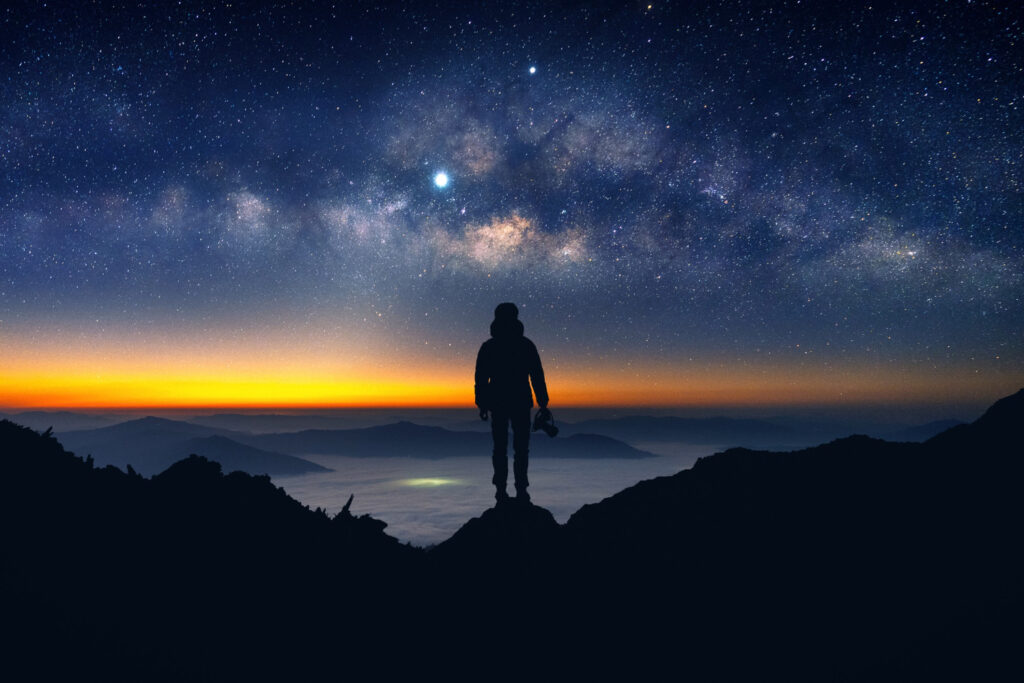
As we approch the end of this adventure, let’s take a moment to recap the stellar highlights:
- What is a star? We’ve learned that stars are giant balls of hot gas, fueled by nuclear fusion in their cores. They come in a dazzling array of types, from “ordinary” main sequence stars like our Sun to massive supergiants, dense white dwarfs, and even neutron stars.
- Star Formation: We’ve witnessed the birth of stars in vast cosmic nurseries called nebulae, where gravity gathers gas and dust, igniting the fusion that brings these luminous giants to life.
- Stellar Evolution: We’ve traced the diverse paths that stars take throughout their lifetimes, from the stable main sequence to the dramatic transformations of red giants and the spectacular finales of supernovae. We’ve seen how the remnants of these stellar deaths, whether white dwarfs, neutron stars, or black holes, continue to shape the universe.
Conclusion
From their fiery births to their dramatic finales, stars illuminate the cosmos with their brilliance and complexity. They are not merely distant points of light but the architects of galaxies, the creators of elements, and the potential cradles of life. By understanding their diverse forms, intricate structures, and life cycles, we gain a deeper appreciation for our place in the universe and the interconnectedness of all things. That’s it, now we know what stars are!!! Let me know what your thoughts are in the comment section below.
